Jeff Davis's Blog, page 2
November 16, 2018
What I learned About the Future of Sales Enablement at #Transform18 hosted by Showpad
I had the pleasure of attending Showpad’s first ever US conference - TRANSFORM18. The theme was “Reimagining Sales Enablement”. As a keynote speaker and business coach focused on strategically aligning Sales and Marketing, I attended because I wanted to see what the future of Sales Enablement looks like. I wanted to learn from industry experts and sales enablement practitioners alike to be able to share this knowledge with sales and marketing leaders that may/may not be fortunate enough to have a sales enablement role within their organization.
The roster of speakers included knowledgeable folks like: Mary Shea, Todd Caponi, Roderick Jefferson, Tim Riesterer, and many more.
Below are some of my key learnings at the conference:
We must learn to amplify and complement what the buyer is doing early on in their self-directed discovery journey. (via Mary Shea)
62% of B2B buyers say they can now develop selection criteria or finalize a vendor list - based solely on digital content. This means that we must ensure we are telling our company story via several different channels including third-party sites.
Status Quo Bias is real and it’s keeping your buyer from making a decision to buy. You must learn how to address this powerful human instinct and use it in your favor when connecting with buyers. (via Tim Riesterer)
You need different messaging when you are trying to “get” customers than when you are trying to “keep” them. Marketing can be a significant help to salespeople and account managers when connecting with customers in these two very different situations.
Buyer group stakeholders has increased by 75% (2009 - 2017) because buyers want to mitigate risk more and more before making a purchasing decision. Build deep trust with them so they all know that they are making the right decision to purchase your product/service. (via Tim Sullivan)
Buyers are not really good at determining what is truly causing their pain. We need to act like physicians/personal trainers and help them diagnose their true business issues. (via Todd Caponi)
We are not thinking machines that feel. We are feeling machines that think. This means that most buyers make initial buying decisions based on emotion then justify it with logic - even in B2B.
It is crucial for Sales and Marketing to align on metrics in order to be able to provide customers with the best customer experience (CX) (via Theresa O’Neil)
The #1 reason Sales doesn’t make quota is: inability to articulate unique value [Sirius Decisions] (via Pieterjan Bouten, CEO)
Sales Enablement practitioners are the “translators of dialects and languages” and help create synergy between sales, marketing, and product teams. (via Roderick Jefferson)
Hope some of the above learnings are valuable as you explore Sales Enablement and strategically aligning Sales and Marketing to drive growth.
See you next year at Transform19!
create togetherness.












July 5, 2018
Low Conversion Rates? Dig Into Your Revenue Funnel Data For Insights
You’ve got plenty of leads—maybe too many, in fact. You’ve got plenty of potential sales calls and appointments. But when it comes to looking at the numbers—to comparing your conversions against the number of conversions you think you should have—then it becomes a different story.
Welcome to the sales funnel conundrum, when the potential doesn’t match the reality and you start to question what’s going on. Well, in answer to that: There could be a lot of things going on, and it could be that some of them relate to problems in your sales funnel.
The sales funnel is more often than not the place to start, and that’s because it’s a great way to pick apart your process and to find out what you’re doing and where customers are getting stuck. It has definable points, including top, middle, and bottom.
As I've stated before, to have a robust sales and marketing alignment strategy you must address three key pillars - DATA, PROCESS, and COMMUNICATION. The graphic below will help you understand what’s happening and how to do a deep dive into your sales process.

Via Salesforce
June 19, 2018
AI Gives Sales and Marketing Leaders X-Ray Vision Into Pipeline Activity
There's an old saying in geometry circles: every square is a rectangle, but not every rectangle is a square. It's true; all squares have the basic elements of a rectangle: four sides, four right angles. To be a square, though, all four sides must be of equal length; a rectangle only cares about equal length on its parallel sides.
What does this have to do with sales and marketing? All sales is marketing, but not all marketing is sales. When the two sides realize this point, it changes the fundamental nature of how sales and marketing work in a business.
In a B2B world, marketing effectively lays the groundwork for sales. It generates new leads into the system and works to establish the best conditions for sales to engage.
Sales, meanwhile, delivers the decisive step in the overall revenue generation process. Sales relates the company’s value proposition to the prospective buyers, handles objections, demonstrates the economic benefit and ultimately makes the final arrangements for the delivery of a product or service.
The two functions are inextricably linked, and yet are separate and distinct. Marketing's failures are a direct handicap to sales, while sales' failures make marketing's efforts a poor allocation of time and resources.
What is Sales’ Contribution? What is Marketing’s Contribution?Some sales seem to occur without the marketing team having made a single contribution. It can be said for instance that in general a deal that was sourced and closed by an account executive without any involvement of the marketing team, can be attributed to Sales.
Conversely, certain deals are signed when the majority of the value was created by the marketing team. A highly qualified opportunity can require very little effort from sales to close.
In this light, marketing contribution is the incremental revenue generated by marketing activities. It can be measured intuitively: what would total sales had been had there been no marketing activity at all?
Sales contribution, is the exact opposite: what would sales have been had there been no sales activity?
By recognizing these two sources of contribution, marketing and sales, business leaders can better understand the factors that make up a good utilization of marketing resources and the sales activities that lead to the highest revenue.
Marketing should effectively tell the sales force where, how and when a lead needs to be worked on so it has the best chance of success. This includes determining lead/product fit but also the interest level and the revenue potential of those leads. Marketing is effectively the gauge by which sales effectiveness is measured; if the leads are all poor quality, there's a problem in lead generation, and the process needs to be revamped. If leads and opportunities are all of high quality and bookings are not growing, there’s a sales problem and the relevant processes, skills and activities need to be re-examined.
So, How Can AI Help?With AI, sales leaders can have a 360-degree view of their entire revenue generation process and see the exact value created by lead generation, prospecting and sales activities.
From a lead perspective, AI can provide insight into several key attributes such as:
● The quality of a given lead, based on hundreds of different factors
● The precise dollar value of a lead, as opposed to a historical average
● The expected level of effort required to convert a lead into an actual opportunity
From a sales rep perspective, AI can also gauge the overall quality and contribution of the people involved; factors like work ethic, team mood, product knowledge and closing ability.
A 360-degree view can help you answer those difficult questions that can’t necessarily be solved with the human eye. Questions like:
● What is the true value generated by marketing activities?
● What is the true value generated by the sales development team?
● What is the true value generated by the AE team?
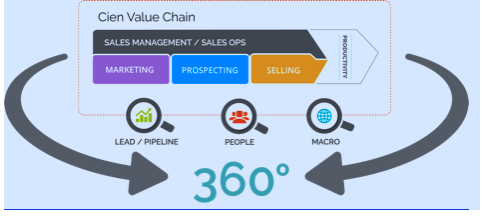
When you know this, you can better optimize your sales and marketing resources, budgets, activities and give credit to the right team for the right reason. Then, you can drill down on the individual level and understand why some perform better than others.
We miss all of the shots we never take, after all, and having a handle on activity levels becomes an excellent gauge into determining if we're really getting the most out of every minute in play. So while the sales department does have the ultimate outcome of the sales contribution in its hands, it can't get very far without the marketing contribution. If sales departments aren't presenting the value proposition correctly or handling objections to the lead's satisfaction, then it really doesn't matter how good a job marketing did finding leads; the sales department couldn't make the final appeal.
Meanwhile, if the marketing contribution isn't up to par, the sales contribution is immediately hampered, spending its time, effort and resources pursuing people for whom no amount of sales efforts will convince the lead there's any value to the product or service offering. It's like trying to sell bowling balls at a fisherman's convention; sure, some of them may bowl, but why aren't you selling fishing gear to people who obviously want fishing gear?
In Sales, Uncertainty is a CertaintyEven with the best numbers, calculations about the fit and interest of leads and opportunities are not enough. Calculations about lead potential have uncertainty built right into the name: potential. Yet as is often the case, management with facts in hand tend to produce better results than management without facts. Uncertainty cannot be removed from the system, but it can be addressed, managed and improved incrementally.
AI makes it possible to measure the incremental value generated by every link in the sales and marketing chain. By applying machine learning and natural language processing (NLP), businesses can gather numbers that reflect reality, enabling you to make the right adjustments and get your sales and marketing teams humming in tune.
Therefore, whether you’re in sales or in marketing, base your discussions over actual contribution in numbers, not on gut feelings. Learn what's working in the sales and marketing process and what isn't, so that the most effective changes can be made on all sides.
About the Author

Rob Käll is an accomplished entrepreneur with 3 Successful MM exits in 10 Years. His latest startup, Cien, gives sales leaders an immediate edge by using the power of AI to increase the productivity of their teams.
Automatically detecting problems, predicting outcomes and recommending the shortest path to success. A versatile leader that has served as Startup CEO, Corporate Exec and Technical Founder, Rob advocates a scientific approach to sales and marketing alignment. Connect with Rob on Linkedin and Twitter.
June 15, 2018
What I Learned at the TMSA Logistics Conference This Week
Every time I attend a new conference or get the privilege of speaking to a new group of people, I like to take some time to reflect on what I learned during that interaction. Embarking on this journey to better understand how to strategically align Sales and Marketing has put me in a unique position where I enjoy getting to learn from professionals and cross pollenate those insights, ideas and concepts to help us all increase our business acumen.
One of those such chances was being selected by Brian Everett and the board of TMSA (Transportation Marketing and Sales Association) to be the opening keynote of their annual conference. I opened my session by helping everyone focus on what powerful partnerships have been able to accomplish in the past in order to set the stage as we all interacted with each other during the conference. My intent was to help us think about building partnerships across the aisle to help us drive better business outcomes.
Beyond sharing my perspective on Sales and Marketing Alignment, I learned a ton about the trucking, logistics, and supply chain industry - what an interesting industry that affects all of our lives. If if weren't for them, Amazon Prime 2-day shipping wouldn't work.
Below are some of the highlights from my time at the conference:
Be sure the marketing teams chooses a marketing automation tool that connects with the CRM to ensure that marketing efforts contribute directly to sales and business goals. (via Jill Schmieg)Sales and Marketing need to align their efforts to business outcomes and set performance targets (via Laura Patterson)In order to get the attention of the CEO we must speak his/her language which means connecting our efforts to the growth of the organization. Influencer marketing can be a useful tool to accomplish your growth goals. Truckers themselves can become a significant partner in helping solve the lack of drivers on the road. According to Forrester, only 13% of customers believe salespeople demonstrate understand of their business challenges. (via Eric Maddox)Freightwaves has become a leading digital freight news outlet with 2x engagement than its competitors (via Craig Fuller)Due to regulations, companies must sometimes establish working relationships with direct competitors in order to ensure customers are serviced adequately.Some of the top challenges facing the logistic industry include: fuel cost, business improvement processes, improved customer service, driver shortage and retention, technology disruptionEnjoy some of the pictures that I captured of my keynote presentation and the conference!
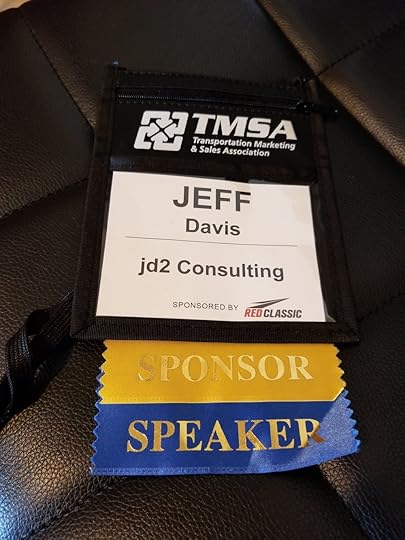
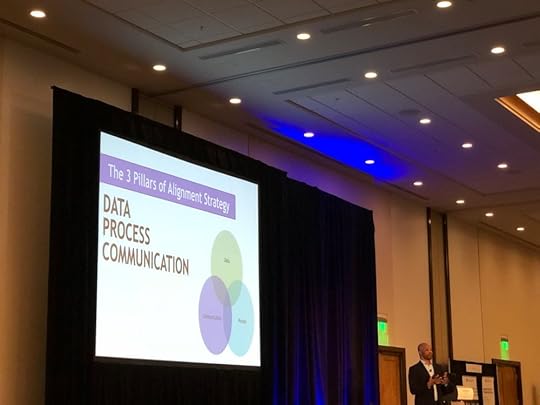
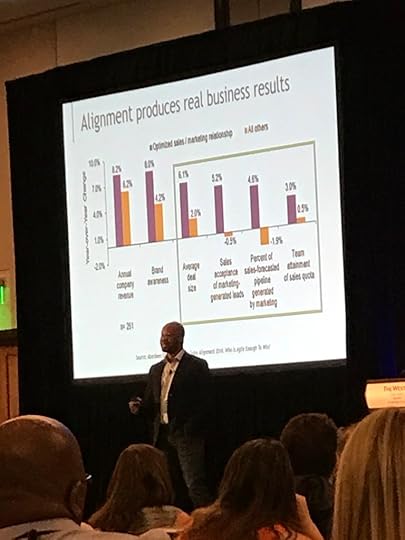

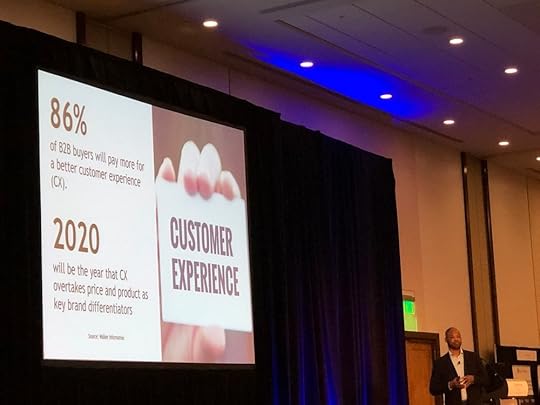




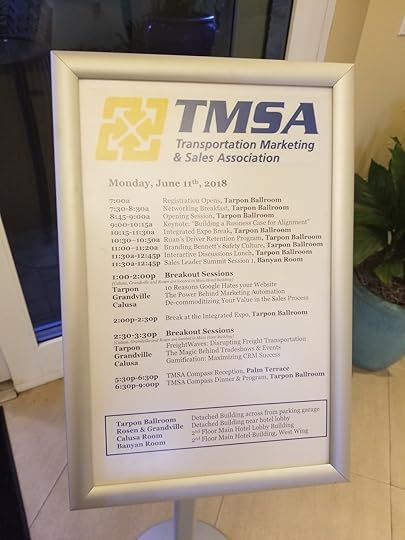


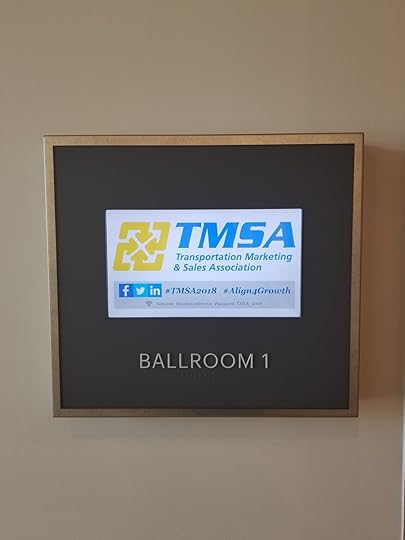
June 7, 2018
What I Learned at the First-Ever Sales Assembly Summit
I had the pleasure of being in the room with sales leaders from Chicago's top tech companies this week at the first-ever Sales Assembly Summit. It was an opportunity not only to learn what it takes to drive growth in an organization, but I wanted to hear the perspective of sales leaders on the topic of aligning with their marketing counterparts. I was pleased to see that the alignment conversation was one of the first sessions of the day.
Below are some of the points that stood out to me during the summit that were relevant to aligning Sales and Marketing:
If Content is king, then Context is god. Marketing provides Content and Sales provides Context (via John Barrows)We have to be able to translate marketing messaging to sales messaging to be effective at closing more customers. Both Sales and Marketing must continue to remind the customer why they bought in the first place to provide good CX and increase the probability of renewal (via Brian Study)Be proactive in thinking what does day 2 look like for the customer to ensure good CXSales and Marketing should get together at least weekly (via Isabelle Papoulias)Doctors are the best salespeople - they ask us questions and based on our response they make an assessment and tell us what to buy (i.e. medication, test, lifestyle change, etc.) (via Wade Burgess)Average sales cycles continue to increaseSales leaders must understand the sales process and what is going on throughout the entire pipeline. They must also understand at a high level what Marketing is doing to help support pipeline revenue. Marketing should be involved in the onboarding process for sales new hires and specifically should be contributing to the sale playbook where it makes sense such as messaging, value prop, customer personas, target profiles, etc. (via Dave Mattson)We must be more transparent when selling to customers today as they have access to more information than ever before. The ideal customer rating is between 4.2 and 4.5 out of a 5.0 scale as customers find this range more believable and credible. (via Todd Caponi)Looking forward to next year's event. Thanks to Jeff Rosset and Matt Green for cultivating a great event and community here in Chicago!
create togetherness.



